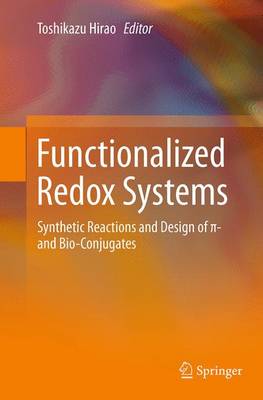(To see other currencies, click on price)
MORE ABOUT THIS BOOK
Main description:
In this book the authors describe how they reproduced the redox functions of biocatalysts artificially. It includes the introduction and discussion of synthetic reactions via electron transfer, hybrid -conjugated systems, and biorganometallic conjugates as novel redox systems. The work was conducted in pioneering fields based on redox systems, in synthetic organic chemistry, synthetic materials chemistry, and bioorganometallic chemistry. The step-by-step process is illustrated by the three major parts of the book: redox reactions (selective synthetic methods using metal-induced redox reactions), redox systems (design and redox function of conjugated complexes with polyanilines or quinonediimines and molecular bowl sumanene), and design of bioorganometallic conjugates to induce chirality-organized structures (bio-related structurally controlled systems). This systematic and up-to-date description will be of special interest to graduate students who are meeting the new challenges of chemistry, as well as to post-doctoral researchers and other practicing chemists in both academic and industrial settings.
Contents:
Introduction.- Synthetic Methods for Redox Reactions Using Phosphorus, Vanadium and Samarium Compounds.- -Conjugated Systems with Coenzyme PQQ, Polyanilines or Quinonediimines, and Sumanene.- Bioconjugates to Induce Chirality Organization.- Conclusion.
PRODUCT DETAILS
Publisher: Springer (Springer Verlag, Japan)
Publication date: October, 2016
Pages: 159
Weight: 2817g
Availability: Available
Subcategories: Biochemistry

